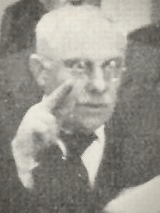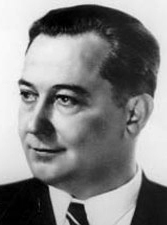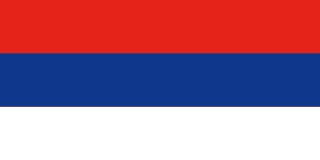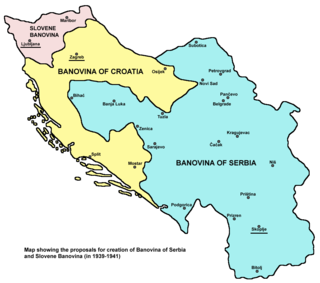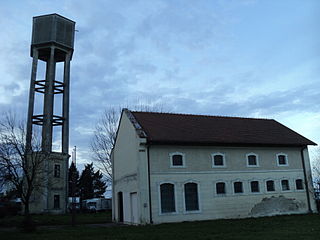| Municipality | | Elected mayor | Party | Notes |
|---|
| Komiža | | Petar Marinković-Dubra [34] | Stranka radnog naroda | 15 mandates SRN, 7 mandates HSS; 60% votes for SRN |
| Vis | | Ivan Farolfi | HSS |
| Trogir | | Ivan Maravić Pavela [35] | Lista saveza radnika i seljaka | 34 mandates communists, 2 mandates HSS |
| Makarska | | Juraj Jurišić [36] | HSS |
| Vrboska | | | Stranka radnog naroda | 2/3 of votes [29] |
| Stari Grad | | | HSS |
| Sinj | | Vice Buljan | Stranka radnog naroda | 26 out of 36 councilmen |
| Nin | | Frane Glavan [37] | HSS | HSS 36 mandates [38] |
| Vranjak | | | JNS dissidents |
| Orebić | | Šime Krstelj [11] | HSS | only list |
| Kuna | | Josip Lukšić [11] | HSS | only list |
| Trpanj | | Franjo Glavina [11] | HSS | only list |
| Janjina | | Mato Matković [11] | HSS | only list |
| Slano | | Ivo Milić [11] | HSS | only list |
| Mljet | | Niko Kunić [11] | HSS | only list |
| Lopud | | Niko Glavinović [11] | HSS | only list |
| Orašac | | Pero Cvjetković [11] | HSS | only list |
| Konavle | | | HSS | only list, [11] elections on May 26 |
| Mirkovci | | | Serb non-partisan list [39] | |
| Novi Jankovci | | | Serb non-partisan list [39] | |
| Bobota | | | Serb non-partisan list [39] | Serb non-partisan list 12 mandates |
| Borovo | | | Serb non-partisan list [39] | Serb non-partisan list 17, SDS 1 |
| Gaboš | | | Serb non-partisan list [39] | Serb non-partisan list 9, SDS 3 |
| Marinci | | | Serb non-partisan list [39] | |
| Šid | | | Serb non-partisan list [39] | |
| Otok | | | Serb non-partisan list [39] | |
| Ston | | Stijepo Matić [40] | Non-partisan list | |
| Šipan | | Božo Palunko [40] | Non-partisan list | |
| Donji Lapac | | Milojko Majstorović [41] | Non-partisan list | Majstorović was a Communist party candidate member; JRZ contested with Jandro Vlatković |
| Veljun | | Milić Gojsović [42] | SDS | 4,931 votes (75,8%) |
| Cetingrad | | Mijo Mravunac [42] | HSS | |
| Drežnik Grad | | Zvonimir Pavlić [42] | HSS | |
| Rakovica | | Rade Klarić [42] | SDS | |
| Slunj | | Mile Paulić [42] | HSS | |
| Primišlje | | Dušan Grubor [42] | SDS | |
| Drniš | | Zvonko Alfirević Nakić [43] | HSS | 3,050 votes out of 4,202 (31 out of 36 councilmen); Serb non-partisan list 3 seats, turnout 52.11% |
| Sveti Križ Začretje | | Stjepan Valjavec [44] | HSS | |
| Novigrad Podravski | | Petar Grahovac [45] | | |
| Promina | | Krste Radas [46] | HSS | HSS 30 mandates [38] |
| Krndija | | | Kulturbund [47] | German list |
| Vela Luka | | Petar Padovan-Kolega [48] | HSS | Communists won 241 votes and 5 mandates |
| Smiljan | | don Blaž Tomljenović [49] | HSS | HSS 24 mandates [50] (initially) Won with just 7 votes more than the communists; in repeated elections won by 4 votes. Communists won 8 seats in the council |
| Punat | | Mate Mrakovčić [51] | ? | |
| Ludbreg | | Ljudevit Vrančić [51] | non-partisan list | beat incumbent, HSS mayor Nikola Miškulin |
| Obrovac | | Danilo Sekulić [51] | SDK | deputy mayor Leopold Ivezić |
| Sela | | Jandro Čipor [51] | Seljačko-radnički savez | SRS 17, HSS 8 mandates |
| Blato | | Ivo Šeparović | HSS | Communists won 470 votes and 7 mandates |
| Vrgorac | | | HSS | Communists won 8 mandates |
| Omiš | | | HSS | Communists won a third of the votes and 6 mandates |
| Aljmaš | | | HSS [52] | HSS dissident list contested |
| Čepin | | | HSS [52] | non-partisan list contested |
| Erdut | | | HSS [52] | non-partisan list contested |
| Ernestinovo | | | HSS [52] | German ethnic list contested |
| Hrastin | | | HSS [52] | SDS, JRZ contested |
| Jovanovac | | | HSS [52] | only list |
| Laslovo | | | HSS [52] | HSS dissident list contested |
| Retfala | | | HSS [52] | non-partisan list contested |
| Sarvaš | | | HSS [52] | German ethnic list contested |
| Tenja | | | JRZ [52] | German ethnic list came second, SDS third and HSS last |
| Dalj | | | SDS [52] | Zbor contested |
| Bijelo Brdo | | | SDS [52] | Zbor and JRZ contested |
| Dragalić | | | HSS [53] | all 12 mandates |
| Medari | | | SDK [53] | SDK 21, Serb non-partisan list 3 mandates |
| Okučani | | | Serb non-partisan list [53] | Serb non-partisan list 24, SDK 12 mandates |
| Stara Gradiška | | | HSS [53] | HSS 17, non-partisan list 1 mandates |
| Rajić | | | SDK [53] | SDK 23, non-partisan list 1 mandates |
| Antin | | | HSS [53] | HSS 12 mandates |
| Berak | | | HSS [53] | HSS 18 mandates |
| Bogdanovci | | | HSS [53] | HSS 12 mandates |
| Svinjarevci | | | HSS [53] | HSS 12 mandates |
| Tordinci | | | HSS [53] | HSS 12 mandates |
| Nuštar | | | HSS [53] | HSS 18 mandates |
| Opatovac | | | HSS [53] | HSS 12 mandates |
| Krnjak | | | JRZ [53] | JRZ 28, SDS 2 mandates |
| Tušilović | | | JRZ [53] | JRZ 14, SDS 4 mandates |
| Vrginmost | | | JRZ [53] | JRZ 19, SDS 5 mandates |
| Bršadin | | | JRZ [53] | JRZ 10, SDS 2 mandates |
| Petrovci | | | SDS [53] | SDS all 18 mandates |
| Bović | | | SDS [53] | SDS all 20 mandates |
| Markušica | | | SDS [53] | SDS all 24 mandates |
| Barilović | | | SDK [53] | SDK all 24 mandates |
| Čakovci | | | SDK [53] | SDK all 12 mandates |
| Mikluševci | | | SDK [53] | SDK all 12 mandates |
| Topusko | | | SDK [53] | SDK 20, JRZ 4 mandates |
| Korog | | | SDK [53] | SDK 11, JRZ 1 mandates |
| Vera | | | SDS [53] | SDS 9, JRZ 3 mandates |
| Trpinja | | | SDS [53] | SDS 9, Agrarian party 2, JRZ 1 mandates |
| Negoslavci | | | SDS [53] | SDS 8, JRZ 4 mandates |
| Lasinja | | | SDS [53] | SDS-led Serb coalition 28, HSS 8 mandatesv |
| Čermenica | | | SDS [53] | SDS 19, JRZ 2, non-partisan list 3 mandates |
| Pačetin | | | SDS [53] | SDS 12, JRZ 6 mandates |
| Vojnić | | | SDS [53] | SDS 24, JRZ 4 mandates |
| Krstinja | | | SDS [53] | SDS 26, JRZ 4 mandates |
| Perjasica | | | SDS [53] | SDS 20, JRZ 4 mandates |
| Ostrovo | | | non-partisan list [53] | all 12 mandates |
| Tompojevci | | | HSS [53] | HSS 9, German ethnic list 3 mandates |
| Sotin | | | HSS [53] | HSS 8, German ethnic list 4 mandates |
| Lovas | | | HSS [53] | HSS 9, German ethnic list 8 mandates |
| Cerić | | | HSS [53] | HSS 8, German ethnic list 4 mandates |
| Mazinci | | | Serb non-partisan list [53] | Serb non-partisan list 8, SDK 4 mandates |
| Donji Čaglić | | Joco Mihajlović [54] | JRZ | JRZ 15, independent list (Ivan Vladar) 4 mandates |
| Dragović | | Lazo Ratković [54] | JRZ | JRZ 15, HSS (Dolfi Podobnik) 3, SDS (Mile Bosanac) 2 mandates |
| Antunovac | | Stjepan Cing [54] | HSS | HSS all 18 mandates |
| Poljana | | Mijo Strganac [54] | HSS | HSS all 18 mandates |
| Badljevina | | Mato Lujanac [54] | SDK | SDK all 20 mandates |
| Bučić | | Stojan Milošević [54] | SDS | SDS 25, JRZ 5 mandates |
| Gaj | | Valentin Opić [54] | SDK | SDK 10, Hungarian list 2 mandates |
| Kukunjevac | | Spasoja Krajnović [54] | SDK | SDK 12, JRZ 4 mandates |
| Lipik | | Valerijan Žiga [54] | HSS | HSS 10, HSS dissidents 2, non-partisan list 4 mandates |
| Pakrac | | Antun Erb [54] | SDK | SDK 12, workers'list (Dragutin Pilar) 2 mandates |
| Daruvar (vanjski) | | Tomo Vujković [55] | JNS-JRZ-Zbor | 14 mandates JNS-JRZ-Zbor, 6 mandates HSS |
| Daruvar (trgovište) | | Lazo Vezmar [55] | HSS | 16 mandates HSS, 2 mandates non-partisan list (Aleksandar Jovanović) |
| Bijela | | Jovan Zailac [55] | non-partisan list | all 18 mandates |
| Dežanovac | | Vencel Nađ [55] | non-partisan list | all 16 mandates |
| Veliki Bastaji | | Božo Zabrdac [55] | Serb non-partisan list | 11 mandates, SDK 5 mandates |
| Sirač | | Antun Hamp [55] | HSS | HSS all 12 mandates |
| Uljanik | | Ivan Štefko [55] | non-partisan Peasant list | 13 mandates, other non-partisan list 3 mandates |
| Daruvarski Brestovac | | Rudolf Urlich [55] | HSS | HSS all 16 mandates |
| Končanica | | Franjo Holubek [55] | HSS | two HSS lists contested |
| Miokovićevo | | Lazar Grujić [55] | SDS | SDS 16, HSS 8 mandates |
| Andrijevci | | | HSS [56] | |
| Bebrina | | | HSS [56] | |
| Beravci | | | HSS [56] | |
| Brodski Drenovac | | | HSS [56] | |
| Brodski Stupnik | | | HSS [56] | |
| Brodski Varoš | | | HSS [56] | |
| Garčin | | | HSS [56] | |
| Kaniža | | | HSS [56] | |
| Klakar | | | HSS [56] | |
| Oriovac | | | HSS [56] | |
| Podcrkavlje | | | HSS [56] | |
| Podvinje | | | HSS [56] | |
| Sibinj | | | HSS [56] | |
| Svilaj | | | HSS [56] | |
| Velika Kopanica | | | HSS [56] | |
| Trnjani | | | SDK [56] | |
| Slavonski Kobaš | | | SDK [56] | |
| Lužani | | | SDK [56] | |
| Jarmina | | | German non-partisan list [47] | |
| Hrastovac | | | German non-partisan list [47] | |
| Šidski Banovci | | | German non-partisan list [47] | |
| Vinkovačko Novo Selo | | | German non-partisan list [47] | |
| Brčko | | | HSS | 2,030 votes for HSS (all 36 mandates) [57] |
| Bosanski Šamac | | | HSS | 1,607 votes for HSS (all 36 mandates) [57] |
| Donja Mahala | | | HSS | 1,387 votes for HSS (all 36 mandates) [57] |
| Tramošnica | | | HSS | 977 votes for HSS (33 mandates), 296 votes for JRZ (3 mandates) [57] |
| Čelić | | | HSS | 699 votes for HSS (29 mandates), 295 votes for JRZ (7 mandates) [57] |
| Gornji Rahić | | | HSS | 750 votes for HSS (27 mandates), 469 votes for JRZ (9 mandates) [57] |
| Bukvik | | | HSS | 981 votes for HSS (all 36 mandates) [57] |
| Obudovac | | | Serb non-partisan list | 474 votes for Serb non-partisan list (25 mandates), 384 votes for JRZ (10 mandates), 55 votes for Zbor (1 mandate) [57] |
| Brezovo Polje | | | Davidović group | 329 votes for Davidović group (18 mandates), 277 votes for Stanojević group (7 mandates), 213 votes for JRZ (5 mandates) [57] |
| Brinje | | Mile Prpić | SDK | SDK 24 mandates [50] |
| Jezerane | | | HSS | HSS 30 mandates [50] |
| Donji Lapac | | | SDK | SDK 30 mandates, Serb non-partisan list 6 mandates [50] |
| Srb | | | Serb non-partisan list | Serb non-partisan list 22 mandates, SDK 8 mandates [50] |
| Gospić | | Luka Hećimović | HSS | HSS 31 mandates, Serb non-partisan list 4 mandates, SDK 1 mandate [50] |
| Karlobag | | | HSS | HSS 24 mandates [50] |
| Lički Osik | | | HSS | HSS 21 mandates, Common Serb list 9 mandates [50] |
| Medak | | | SDS | SDS 23 mandates, Common Serb list 11 mandates, JRZ 2 mandates [50] |
| Bruvno | | | SDK | SDK 17 mandates, JRZ 7 mandates [50] |
| Lovinac | | | HSS | HSS 28 mandates, JRZ 2 mandates [50] |
| Gračac | | | SDK | SDK 23 mandates, Serb non-partisan list 10 mandates, JNS 3 mandates [50] |
| Mazin | | | Serb non-partisan list | Serb non-partisan list 15 mandates, SDK 3 mandates [50] |
| Zrmanja | | | JRZ | JRZ 24 mandates, SDK 6 mandates [50] |
| Bunić | | | SDK | SDK 22 mandates, Serb non-partisan 8 mandates [50] |
| Korenica | | | Serb non-partisan list | Serb non-partisan list 20 mandates, SDS 10 mandates [50] |
| Plitvička Jezera | | | SDK | SDK 11 mandates, Serb non-partisan list 1 mandate [50] |
| Brlog | | | HSS | HSS 24 mandates, Serb non-partisan list 6 mandates [50] |
| Dabar | | | SDK | SDK 13 mandates, Serb non-partisan list 5 mandates [50] |
| Otočac | | | HSS | HSS 33 mandates, Serb non-partisan list 3 mandates [50] |
| Sinac | | | HSS | HSS 30 mandates [50] |
| Škare | | | Serb non-partisan list | Serb non-partisan list 21 mandates, SDK 2 mandates [50] |
| Vrhovine | | | Serb non-partisan list | Serb non-partisan list 25 mandates, SDK 5 mandates [50] |
| Kosinj | | | SDK | SDK 19 mandates, Serb non-partisan list 1 mandate [50] |
| Pazarište | | | HSS | HSS 30 mandates [50] |
| Perušić | | | SDK | SDK 30 mandates [50] |
| Jablanac | | | HSS | HSS 24 mandates [50] |
| Krivi Put | | | HSS | HSS 18 mandates [50] |
| Sveti Juraj | | | HSS | HSS 24 mandates [50] |
| Podlapac | | | SDK | SDK 18 mandates, Serb non-partisan list 6 [50] |
| Udbina | | | Serb non-partisan list | Serb non-partisan list 21 mandates, SDK 9 mandates [50] |
| Biograd | | | HSS | HSS 36 mandates [38] |
| Zemunik | | | HSS | HSS 36 mandates [38] |
| Knin | | | Serb non-partisan list | Serb non-partisan list 27 mandates, SDK 9 mandates [38] |
| Božava | | | HSS | HSS 18 mandates [38] |
| Preko | | | HSS | HSS 36 mandates [38] |
| Sali | | | HSS | HSS 28 mandates [38] |
| Silba | | | HSS | HSS 24 mandates [38] |
| Veli Iž | | | HSS | HSS 24 mandates [38] |




